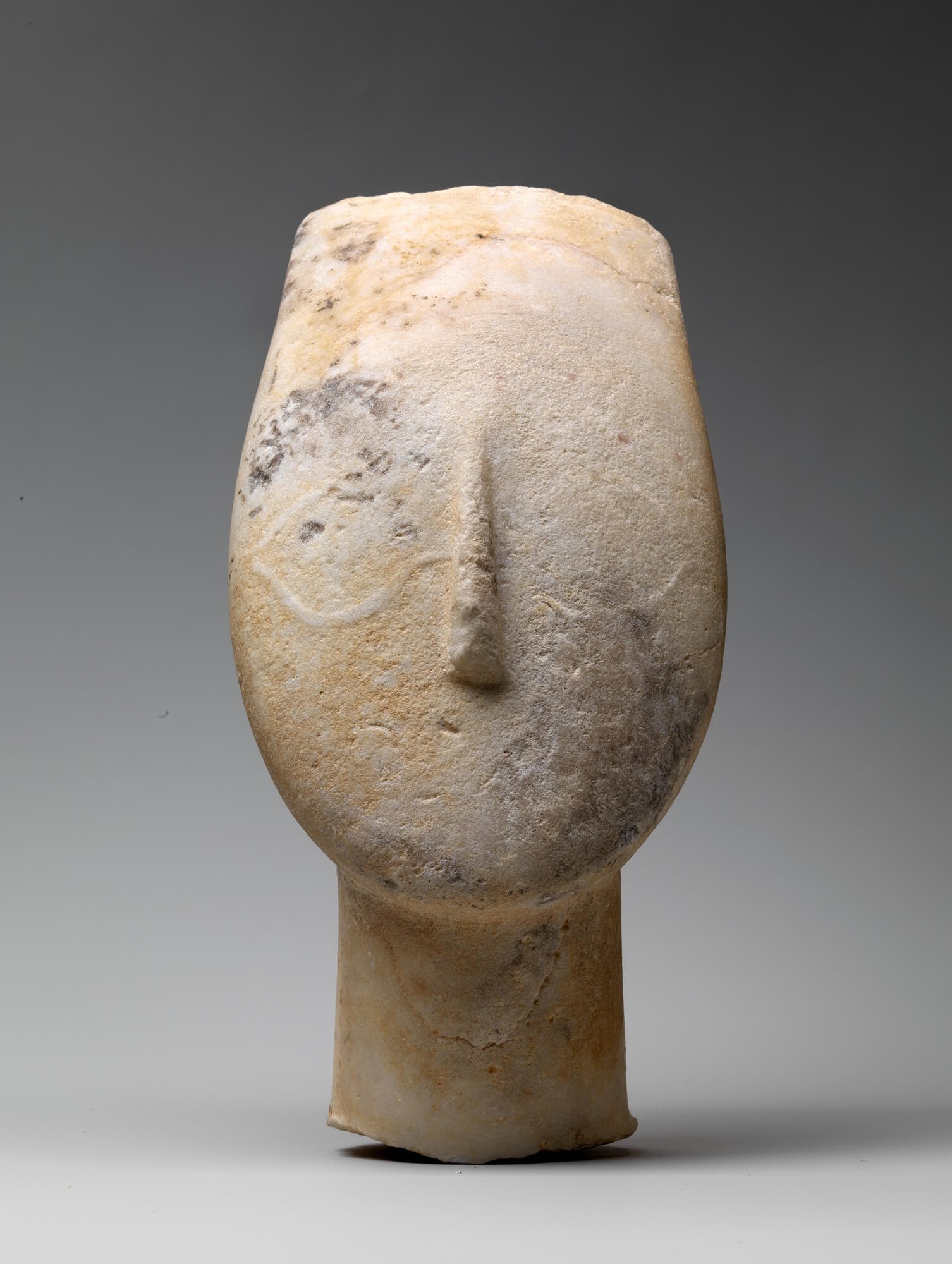Cover image: Two Cycladic figurines at the Yale University Art Gallery in New Haven, CT. Photo (c) A Scholarly Skater – all rights reserved.
Recently, I’ve been trying to figure out exactly what it is about art that I love so much. Clearly, I love it, but why? While I haven’t really come to any enlightening realizations yet, pondering the question has led me to think about the types, styles, and works of art that most inspire me.

One type of art I’ve always loved, and I know that I’m not alone in this, is ancient Cycladic figurines. These little marble figures were created in ancient times, c.2000s BCE, on the Aegean islands of the Cyclades. They depict human figures – mostly standing, but sometimes seated – and human heads. Examples can be found in most major museums. I saw the two shown above earlier this year at the Yale University Art Gallery, but I’ve seen them many other places, too. There’s a great selection on display at the Metropolitan Museum of Art, including some on loan from the Hellenic Republic (Greece) itself.

As I’m sure you have noticed from the pictures, this figures are very minimal and modern in their approach. This made them very popular during the late 19th century and the first half of the 20th century, when Modernism was the big thing. Although, my artistic tastes tend to run a bit more towards the traditional, I guess it’s that quality that appeals to me in these, too. I find these figures so charming, and I think it’s because of how timeless and universal they are. As sparse as their modelling is, they unmistakably convey their subject matter. And the basic shapes the Cycladic artists used to indicate the human body are much the same ones we use today when drawing a stick figure or another simple indication of a person. This is particularly true for the face-only figures, which are basically ovals with long, thin noses. I find these figurines so relatable despite their great age. I guess this proves that some essential features of humanity don’t change. I also think these figures can be so easily appreciated today because their economy of lines and details eliminates anything – fashion, hairstyles, or even facial expressions – that might place them in another time and place.
You can explore Cycladic art, particularly Cycladic figurines, more at the Museum of Cycladic Art.

